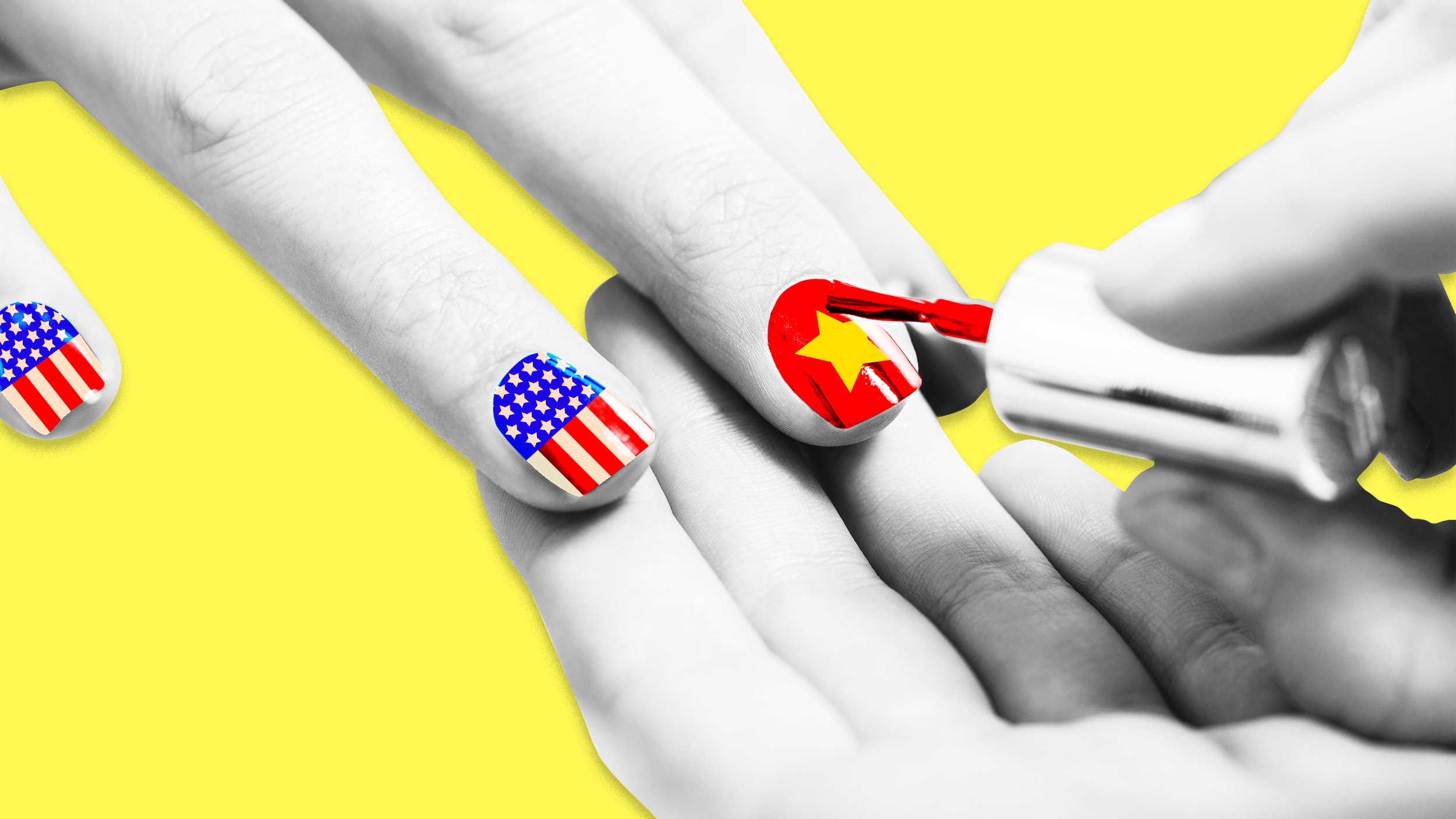Finding Refuge in Beauty: The History of Nail Salons
Image Courtesy: The Daily Beast
Enter a nail salon anywhere in the U.S., and you’re most likely met with Vietnamese workers, traditional prayer altars, and symbols of Buddha strewn about. Why? How have Vietnamese immigrants dominated the nail industry in a nation thousands of miles away from their homeland? The origins of Vietnamese immigrant success began in 1975 and contain ties to two vastly different experiences: the Vietnam War and Hollywood.
After the fall of Saigon in Vietnam, marking the end of the Vietnam War, many Vietnamese people fled the country. 1.4 million Vietnamese immigrants came to the United States. Actress Tippi Hedren, most notable for her iconic role in Alfred Hitchcock’s 1963 film The Birds, was helping at a Vietnamese refugee camp in Hope Village, Sacramento, California. Hedren worked with about 20 Vietnamese women, aiming to provide them with skills such as typing or sewing in order for them to make a living in the United States. However, the Vietnamese women were infatuated with something else: her nails. Hedren noticed the women’s interest and admiration in her nails, so she flew in her personal manicurist, Dusty Coots, to teach them how to do nails. Hedren also worked with a local beauty school to help women find employment. The women were taught numerous skills, including the silk nail technique, which uses a silk material to create artificial fingernails, much like today’s acrylic nails. All 20 Vietnamese women went on to pass their tests in English and received a license to do nails, with many women eventually opening their own shops around California.
Image Courtesy: BBC
Vietnamese immigrants began (and continue) to redefine the nail industry. The low prices for nail services at Vietnamese-owned salons made the previous luxury of manicures and pedicures accessible to the general public, no longer reserved for wealthy white women. Nearly 50 years later, the nail salon industry is worth about 8 million dollars, with approximately 40% of nail technicians in the U.S. being Vietnamese women and 80% percent of licensed manicurists in the state of California are Vietnamese. Many Vietnamese immigrants and families have continued to receive their nail license, as it is brief, inexpensive, and does not require a high English proficiency. In fact, many nail schools are Vietnamese-owned and teach in Vietnamese. After receiving their licenses, Vietnamese families will often move to small towns all over the nation where they can open up a nail salon with little to no competition. However, when finding work in a small town, they are often one of a few Asian residents. Unable to find a community of fellow Vietnamese immigrants, these families often feel like outliers or outsiders in their small, predominantly white, American towns.
Image Courtesy: Strike FSU
Although many Vietnamese immigrants find success in working or opening nail salons, the profession comes with considerable health risks and disadvantages. Workers are constantly inhaling fumes and chemicals that are irritants to the skin, eyes, nose, throat, and respiratory system. Some chemicals are even considered endocrine disruptors, which ultimately have an effect on hormones and reproductive organs. These chemicals can lead to extreme health problems like tumors, cancers, birth defects, as well as neurological and developmental degradation.
Image Courtesy: New York Times
Before the pandemic, many nail salon workers and owners already faced poor working conditions and failed to qualify for benefits or health insurance, despite facing numerous health risks in their day-to-day professions. However, Asian businesses took an even bigger hit during the pandemic. In addition to the closing of small businesses, Asian-Americans faced a stigma around the spread and origin of COVID-19. These false notions were further perpetuated when Governor Newsom of California claimed that the first instance of COVID-19 in the state started at a nail salon. He declined to elaborate or provide additional details, which prompted backlash from the already struggling beauty industry. Later, state officials announced that they no longer believed the spread of COVID-19 in California started at a nail salon and apologized for the governor’s remarks. As anti-Asian sentiment began to rise following the pandemic, Asian-owned businesses became targets for violence and ostracization. On March 16, 2021, a shooting spree targeting spas and massage parlors in Atlanta resulted in the deaths of six Asian women.
Image Courtesy: NBC
Vietnamese-owned businesses are still trying to recover from the effects of COVID-19 and the stigma around Asian-Americans. As the backbone of the nail industry, these Vietnamese families continue to work hard to not only support and provide for their families in the United States but to send money to their relatives back home in Vietnam. For Vietnamese immigrants, hard work and dedication while doing nails are always about becoming better, wanting their children to prosper and succeed by obtaining a college education in the United States and perhaps, one day, making their return to Vietnam.
Strike Out,
Writer: Jayna O
Editor: Roxy Rico
Graphic Designer: Nicole Terry
Tallahassee





